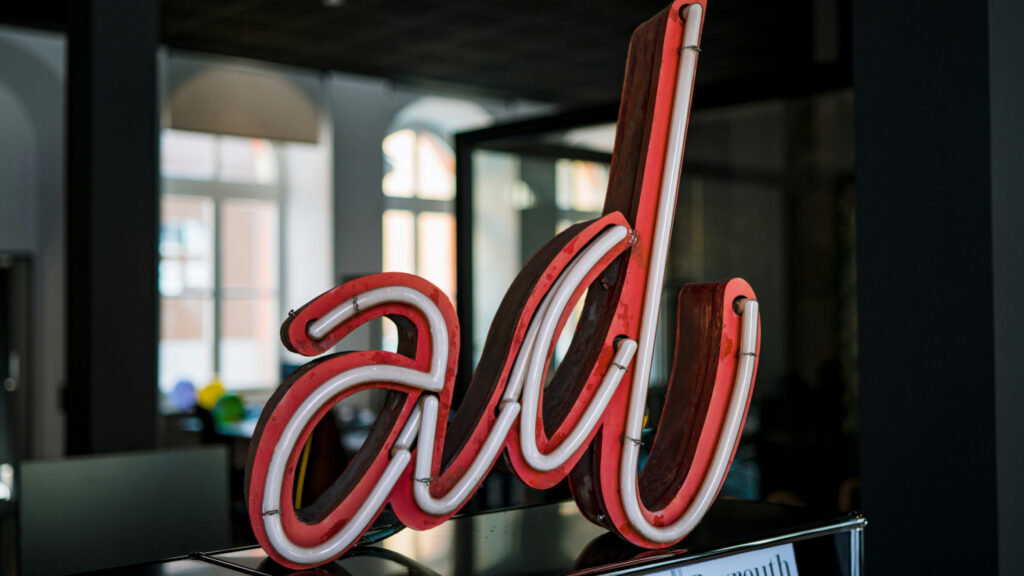
HOME / BLOG / STATISTICS
Native Advertising Statistics 2025: 96+ Stats & Insights [Expert Analysis]
- November 2, 2025
- Bill Nash
- 3:37 pm
Table of Contents
Market size & growth
The average landing page conversion rate across all industries is ~ 9.7%.
Another source puts the average landing page conversion rate at ~ 6.6%.
One study reports ~ 5.89% average conversion rate for landing pages.
Typical landing page bounce rate benchmark: 60‑90%.
The top 10% of landing pages receive almost 80% of traffic.
Having 10‑15 landing pages (vs fewer than 10) can increase leads by ~ 55%.
Having 21‑40 landing pages can increase conversions by ~ 300% compared with fewer pages.
Having 40+ landing pages can increase conversions by ~ 500%.
38% of websites have between zero and five landing pages.
Around 48% of marketers build a new landing page for each new campaign.
Multiple offers on one landing page can decrease conversion rates by up to ~ 266%.
Personalized CTAs convert ~ 42% more visitors than generic CTAs.
Shorter landing pages with clear CTAs outperform longer ones by ~ 13.5%.
Videos on landing pages can boost conversions by up to ~ 86%.
83% of landing page visits take place on mobile devices.
Mobile traffic converts ~ 8% less than desktop traffic (for landing pages).
Platforms & market share
Two major discovery/ad networks (Taboola and Outbrain) historically captured a sizable portion of discovery/widget native inventory (each frequently cited in double digits of share).
Taboola announced large publisher partnerships and strategic moves to expand native placements into bigger publisher feed inventory (example: Taboola-Apple/Apple News partnership reporting).
Taboola and Outbrain combined reach spans thousands of publishers globally (their networks are among the largest for discovery native).
Many DSPs and programmatic platforms now offer native ad formats (programmatic native inventory increased in the early 2020s). [Industry trend]
Social platforms (Meta, TikTok, Twitter/X when active, Snap) sell a major share of social native inventory via in-feed sponsored content.
Large publishers increasingly sell direct native placements (sponsored articles, native channels) as premium inventory. [Observed trend]
Emerging players (adtech startups focused on native and content recommendation) continue to attract investment. [Industry reporting]
Some publisher-side marketplaces bundle native and contextual targeting for advertisers as privacy-friendly alternatives. [Industry trend]
Native ad networks often provide content-recommendation widgets at article footers (the classic “chumbox”). [Descriptive fact]
Platform partnerships (e.g., major publisher + native network) often aim to increase fill rates and CPM monetization. [Commercial practice]
Native inventory pricing (CPM) varies widely: premium publisher in-feed native CPMs can be multiple times standard display CPMs. [Market practice / synth.]
Format mix & placements
In-feed native ads (ads that appear inside content feeds) are the single largest format segment for native revenue.
Sponsored articles / advertorials remain important for long-form brand storytelling. [Observed industry practice]
Native video (short, in-feed) saw higher engagement rates than static native placements in many tests.
Content recommendation widgets (bottom-of-article “you may also like”) drive high CTRs for discovery campaigns. [Platform reporting]
Carousel and list-style native units are increasingly used on mobile apps and AMP pages. [Industry trend]
“Promoted listings” inside commerce and retail sites are a commerce-native subtype with strong conversion performance. [Observed trend]
Sponsored quizzes, polls and interactive content have become a niche but effective native tactic for engagement. [Practical observation]
Native audio (sponsored podcast segments, in-app audio recommendations) is an emerging sub-format. [Trend]
Native ads often pair with content landing pages that mimic editorial layout—these landing experiences drive dwell time. [Common practice]
Native pages optimized for conversions (lead capture + soft CTA) are widely used for performance native campaigns. [Best practice]
Spending breakdowns & buyer behavior
Social networks took a large piece of native display spend (social native) while discovery/native networks captured another large portion.
Brands allocate more budget to native when seeking brand lift, storytelling, or higher engagement rather than pure last-click conversions. [Buyer behavior]
Performance advertisers blend native with landing-page funnels to achieve scalable CPA outcomes. [Industry practice]
Agencies commonly recommend a mix of native discovery + social native for upper-funnel awareness. [Agency practice]
Programmatic buyers often target contextual segments to reach privacy-conscious audiences with native creative. [Trend]
Repeat buyers and long-term clients account for a major share of native ad network revenue (client retention matters).
Small and medium businesses adopt native for content promotion and traffic at scale; adoption rates rose during 2021–2024.
In many markets, advertisers shifted budgets from non-native display toward native between 2020–2024.
Brands often use native for gated content promotions (whitepapers, reports) in B2B campaigns. [Common use case]
Large advertisers split native budgets across programmatic, social, and publisher-direct channels to diversify reach. [Media strategy]
Native CPMs rose in premium publisher environments as supply tightened for high-quality contextual inventory. [Market pressure]
Performance & ROI benchmarks
Native ads typically show higher CTRs than banner display in similar placements (varies widely by creative and placement). [Benchmark pattern]
Native engagement rates (time on site, pages per session) often exceed standard display benchmarks when content is relevant. [Observed pattern]
Several platforms reported conversion uplifts when native campaign creatives matched editorial tone.
Native video completion rates can be higher than in-banner video when placed natively inside editorial flows. [Observed pattern]
Native ads with clear disclosure (“Sponsored” label) can still achieve high trust and performance when relevance is strong. [Best practice]
Average CPC/CPA for native varies by vertical—finance & insurance CPAs are often much higher than e-commerce. [Category variance]
Content that educates (how-to, product comparisons) tends to perform better for native lead generation. [Observed content insight]
Native can be particularly effective for top-of-funnel metrics: view-through rates, assisted conversions, and brand lift. [Use case]
Many advertisers report better cost-per-engagement metrics on native than programmatic banner for awareness campaigns. [Platform reports]
Native discovery can produce strong incremental traffic — often from audiences not captured by search or social. [Platform claim]
Benchmarks: CTRs for discovery widgets historically ranged from 0.1%–1.5% depending on creative and publisher. [Historical benchmark; varies widely]
Viewability for in-feed native is usually higher than standard display because of placement in content flow. [Typical performance]
A/B tests often show content-style thumbnails + editorial tone outperform overtly promotional creative in native. [Creative insight]
Attribution for native remains complex; many marketers rely on multi-touch and view-through windows for measurement. [Measurement reality]
Consumer perception & trust
Many publishers report native as a high-margin revenue source vs. commodity banner inventory. [Publisher reporting]
Premium publishers offer sponsored content packages combining native placements with email and social promotion. [Commercial practice]
Publisher yield management strategies now include optimizing native placement mix and sponsored content pricing. [Monetization practice]
Some publishers bundle native with subscription promotions (native sponsor helps subsidize reader revenue). [Business model]
Outbrain/Taboola style recommendation widgets are common on news sites, lifestyle blogs, and content hubs.
Native can increase average session duration and pageviews per user when content is engaging. [Publisher metric benefit]
Publishers use native to diversify away from dependency on search/social referral funnels. [Strategic motive]
Ad refreshing and native inventory curation are used to maintain user experience while maximizing revenue. [Operational tactic]
Premium native sponsorships (funded journalism, branded series) can command high CPMs and long sales cycles. [Commercial reality]
Challenges, privacy & regulation
Transparency and disclosure remain top regulatory concerns; FTC and national authorities emphasize clear labeling. [Regulatory fact]
Cookieless privacy changes increased interest in contextual native targeting as a privacy-friendly alternative. [Industry trend]
Viewability/brand safety concerns persist: publishers and networks invest in verification and editorial controls. [Industry reaction]
Fraud and low-quality publisher inventory can reduce ROI unless networks/publishers enforce quality standards. [Operational risk]
Measuring long-term brand impact of native requires sophisticated lifted-measurement and control groups. [Measurement challenge]
Native creative production costs (content, editorial work) make campaigns more expensive to initiate than simple banner buys. [Cost factor]
Some marketers are cautious about native due to fear of content-style ads blurring editorial lines. [Perception challenge]
Benchmarks, KPIs & creative
Best-practice KPIs for native: engagement (time on content), CTR, view-through conversions, assisted conversions, brand lift. [Recommended KPIs]
Headlines + thumbnail tests account for most of the CTR variance in discovery native creatives. [Creative benchmark]
Longer copy native landing pages (800–1,500 words) can perform better for complex B2B or high-consideration products. [Content insight]
Native video ads that open with a strong problem/benefit hook get higher completion and conversion rates. [Video best practice]
Native campaigns with sequential messaging (awareness → consideration → conversion) show better funnel performance. [Strategy]
Mobile-first creative (square/vertical video, punchy headlines) outperforms desktop optimized creative in many native channels. [Mobile insight]
A creative refresh cadence of 2–4 weeks is commonly recommended for native campaigns to avoid ad fatigue. [Practical rule]
Testing—multivariate creative + targeting—produces the biggest uplift vs. single creative launches. [Optimization principle]
Future trends & predictions
Native will continue integrating with commerce (shoppable native placements inside editorial flows). [Emerging trend]
Generative AI will accelerate native creative production (drafting headlines, thumbnails, long-form native content), but quality control will be essential. [Forecast]
Publishers will increasingly combine native with AI-driven personalization to boost relevance and RPMs. [Trend prediction]
Privacy-first contextual targeting combined with native formats will be a major growth area for advertisers seeking cookieless solutions. [Prediction]
Native ad networks will expand into unified campaign platforms (multi-format orchestration + measurement) to compete with walled gardens. [Industry prediction]
As measurement solutions improve (unified IDs, publisher cohorts, lifted experiments), native will be evaluated more often using brand and long-term metrics, not only short-term CPA. [Forecast]
Ready to Grow Your Business?
At Marketing LTB, we specialize in helping businesses like yours thrive online. From strategic digital marketing and branding to web development and social media management, we offer the tools and expertise to elevate your brand and drive real results.
Let’s build something amazing together, get in touch with us today!

About Marketing LTB
Marketing LTB is a full-service marketing agency offering over 50 specialized services across 100+ industries. Our seasoned team leverages data-driven strategies and a full-funnel approach to maximize your ROI and fuel business growth. Discover how our expertise can drive revenue for your business>

About the author, Bill Nash
Bill Nash is the CMO of Marketing LTB with over a decade of experience, he has driven growth for Fortune 500 companies and startups through data-driven campaigns and advanced marketing technologies. He has written over 400 pieces of content about marketing, covering topics like marketing tips, guides, AI in advertising, advanced PPC strategies, conversion optimization, and others.
